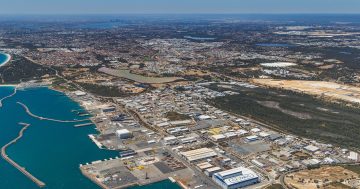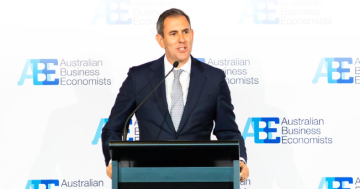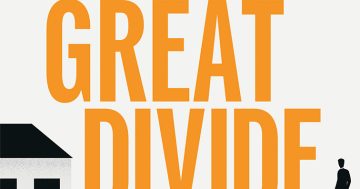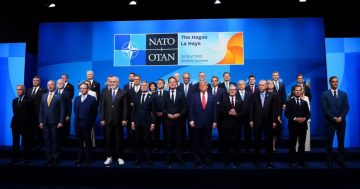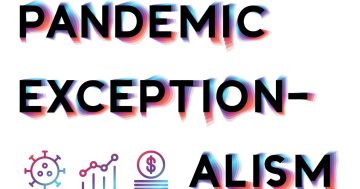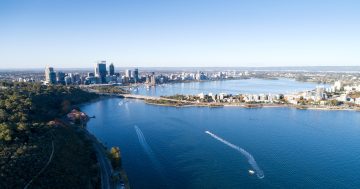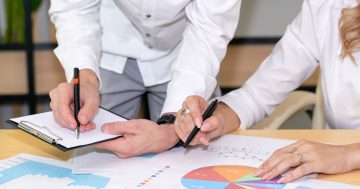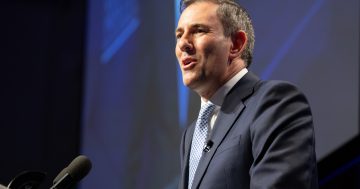Michael Janda and Stephanie Chalmers* say GDP data shows Australia’s economy is 1.1 per cent bigger than at the start of the COVID pandemic.
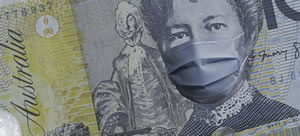 Australia’s economy has bounced back from the COVID recession, growing by a much-better-than-expected 1.1 per cent over the past year.
Australia’s economy has bounced back from the COVID recession, growing by a much-better-than-expected 1.1 per cent over the past year.
As recently as a few weeks ago, most economists were hoping that Australia’s economy might just get back to where it was before nationwide pandemic lockdowns from late March to May last year.
But not only is Australia’s economic output bigger than it was before the national lockdown, it also recovered from the previous quarter’s bushfire and early pandemic-driven decline, and is 0.8 per cent larger than its previous peak.
The experience of Melbourne florist Shane Sipolis over the first few months of the year is typical of the rebound, as people and businesses started to regain confidence to book events.
“After weeks of normality, we kicked back off again and a lot of our weddings that had been backlogged from the year before … started to really pick up,” he said.
With the events sector playing catch-up, it was even busier than pre-pandemic.
“We even had one weekend where we had to try and get eight weddings done,” he said.
“A lot of them had actually more money to spend — they were coming back to me and asking to increase the floral budget.”
Australia comes out of COVID smelling roses
Deloitte Access Economics said there were only five other countries that could boast an economy bigger than it was prior to COVID-19.
The annual result was powered by a much-better-than-forecast 1.8 per cent expansion over the three months to March, when most economists were expecting 1.6 per cent.
Even those forecasts had been substantially revised higher as recent ABS data that feed directly into the GDP number came in well above expectations.
Private sector takes over from public
Analysts are also pleased with the main drivers of growth, split between private investment (which added 0.9 percentage points to the quarterly result) and household consumption (which added 0.7 percentage points).
Deloitte Access Economics partner Kristian Kolding said the GDP figures showed Australia’s recovery was becoming more broad-based.
“Families are spending locally, and businesses continue to invest, making the most of record-low interest rates and tax offsets,” he observed.
“Meanwhile, Government stimulus is becoming a much smaller driver of growth than it was last year.”
The ABS said private investment was driven by both business machinery and equipment purchases, up 11.6 per cent in the strongest result since December 2009, and housing investment, up 6.4 per cent.
In turn, both of those areas were supported by Government subsidies — temporary full expensing of business investment and the HomeBuilder scheme.
National COVID ‘second wave’ threat
However, most economists also caution that Australia cannot rest on its achievements so far.
CommSec’s chief economist Craig James pointed out that Victoria’s current lockdown — the effects of which will not show up in the GDP data until the June quarter figures are released in September — is a warning that the economic recovery could be quickly undone.
“Stimulus must remain in place until it is clear that a sustainable recovery has been achieved,” he wrote.
“Measures to suppress the virus need to be reinforced. And vaccination rates need to accelerate.
“The primary threats to the economic recovery are a broad Australian ‘second wave’ of the virus and a slow, extended vaccine rollout.”
In Melbourne, Shane Sipolis has just spent the weekend trying to resell flowers he had already bought for corporate events that were cancelled.
But he found there was a sense of fatigue among people who had rallied behind local businesses during previous lockdowns.
That meant thousands of dollars worth of flowers ended up in the bin.
“We were all starting to get sort of settled in and thinking like we could start to return to some sort of normal,” he said.
“This is the fourth lockdown, and it being a snap lockdown, there is a huge fear that anything can change at any moment, so that really rocks people’s confidence.”
For Mr Sipolis’s business, that means he is unlikely to hire more staff, even to cope with the busy periods like the weekends with multiple weddings he experienced earlier this year.
“When we employ somebody, then we feel responsible for them and if everything switches at any moment, then that’s also quite a difficult position to be in,” he added.
*Michael Janda is the ABC’s Online Business Reporter. Stephanie Chalmers is a business reporter with the ABC based in Sydney.
This article first appeared at abc.net.au.



